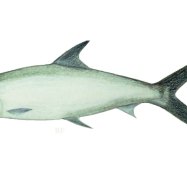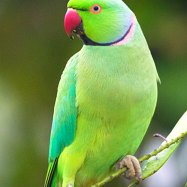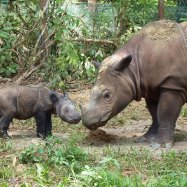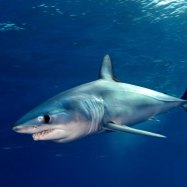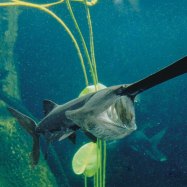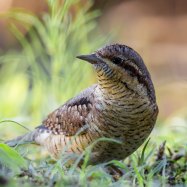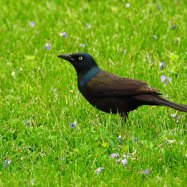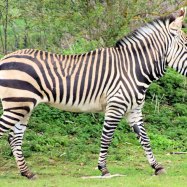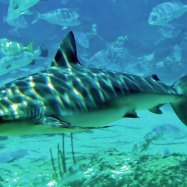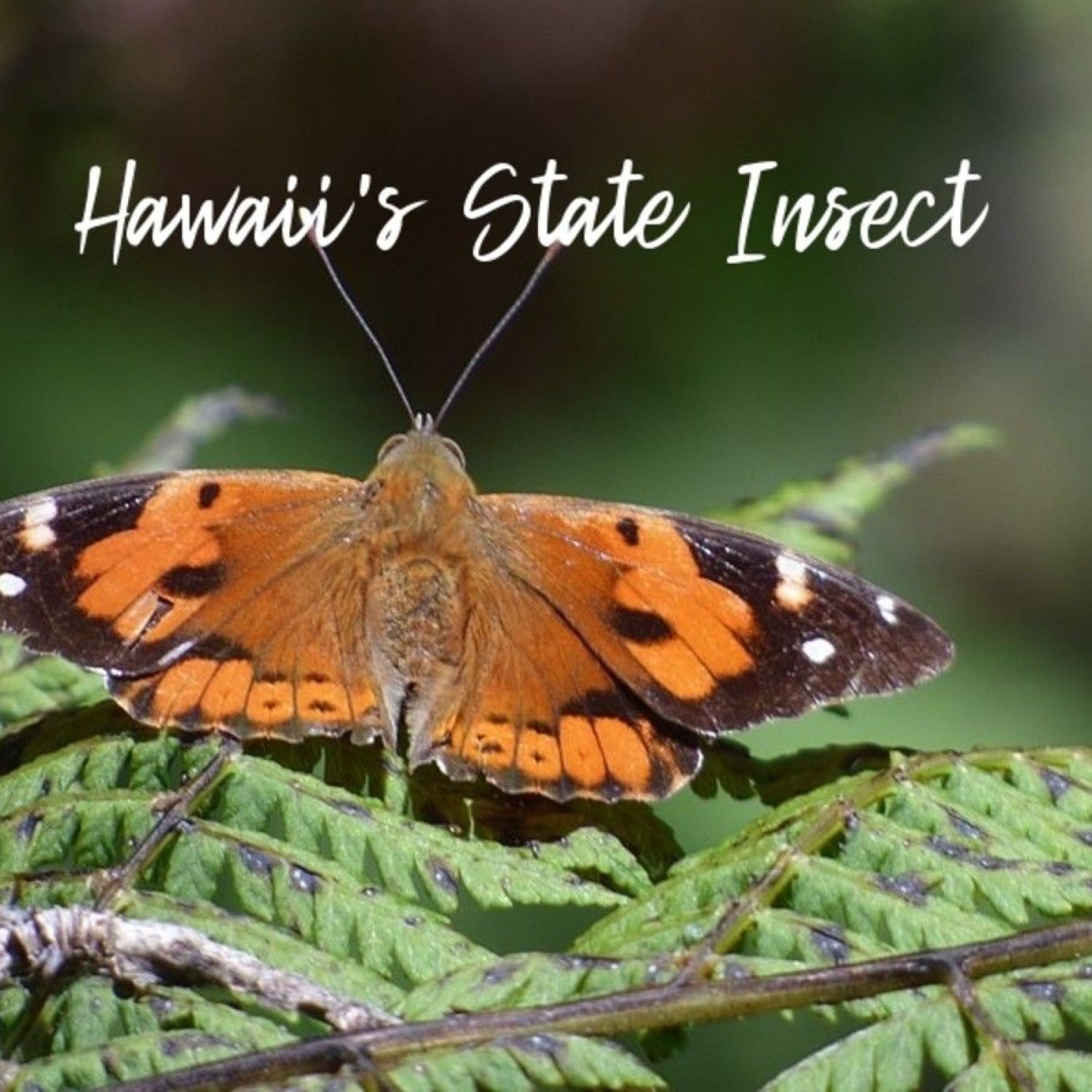
Kamehameha Butterfly
2.4-3 inches (6-7.6 cm)
The Kamehameha Butterfly, found in Hawaii, is a stunning medium-sized butterfly with broad wings. Its name pays homage to the great Hawaiian king who united the islands. At 2.4-3 inches in length, this Nymphalidae family member is a beauty not to be missed. #KamehamehaButterfly #Hawaii #Nymphalidae
Animal Details Summary:
Common Name: Kamehameha Butterfly
Kingdom: Animalia
Habitat: Forest edges, open areas
The Majestic Kamehameha Butterfly: A Rare and Beautiful Native of Hawaii
The world is full of wonders and surprises, and the animal kingdom is no exception. Every day, scientists discover new and fascinating species that leave us in awe of the diversity of life on our planet. One such rare and remarkable creature is the Kamehameha Butterfly, a native of the exotic Hawaiian islands. This majestic butterfly, with its striking colors and unique features, has captured the hearts of many and continues to be a subject of fascination for animal lovers and researchers alike Kamehameha Butterfly.The Kamehameha Butterfly, scientifically known as Vanessa tameamea in the Animalia kingdom, belongs to the phylum Arthropoda and the class Insecta. It is a member of the order Lepidoptera and the Nymphalidae family. Found exclusively on the Hawaiian archipelago, this butterfly is named after Kamehameha the Great, the legendary king who unified the Hawaiian islands in the late 18th century.
An Exceptional Habitat
The Kamehameha Butterfly primarily inhabits forest edges and open areas, making it one of the few butterfly species that thrive in both natural and human-altered environments. It has a flexible habitat preference and can also be found in urban gardens and parks. It is particularly adapted to Hawaii's unique ecosystem, which is made up of tropical forests, grasslands, and shrublands.But what makes Hawaii such an exceptional habitat for this butterfly? The answer lies in its geology and climate. The volcanic origin of the islands has resulted in diverse microclimates, creating a variety of habitats for different species to flourish. Hawaii's tropical climate, with its mild temperatures and abundant rainfall, supports a wide range of flora and fauna, providing a constant supply of nectar for the Kamehameha Butterfly to feed on Kai Ken.
The Feeding Habits of the Kamehameha Butterfly
Like most butterflies, the Kamehameha Butterfly's primary source of nutrition is nectar from flowers. Due to its specific habitat requirements, this butterfly has adapted to feed on different types of flowers found in its natural habitat. Some of its favorite nectar sources include lantana, koa, and 'iliahi.Interestingly, the Kamehameha Butterfly plays a vital role in pollination of plants, making it an essential species for maintaining the delicate balance in Hawaii's ecosystem. Its long proboscis allows it to reach deep into the flower to extract nectar, and in the process, it picks up pollen, which it then transfers to other flowers, aiding in their fertilization and reproduction.
Geographical Distribution
The Kamehameha Butterfly is strictly endemic to the Hawaiian islands, with the majority of its sightings reported on the Big Island, Kauai, and Maui. This butterfly has a relatively small geographical distribution but can be found in various habitats within this range, from sea level to high elevations.The Hawaiian islands are a biodiverse hotspot, home to numerous unique species found nowhere else on earth. The Kamehameha Butterfly's restricted distribution adds to its rarity, making it a prized sighting for nature enthusiasts and researchers.
The Beauty of the Kamehameha Butterfly
The Kamehameha Butterfly is considered one of the most beautiful butterflies in the world, and it's not hard to see why. Its dark brown wings are adorned with intricate patterns of orange and white, creating a stunning contrast that is almost mesmerizing. The upper portion of its wings is dark brown with a bright orange border that fades into white spots, while the underside is a mottled brown, resembling tree bark.As if its stunning coloration wasn't enough, this butterfly has a unique feature that sets it apart from other species. It has a tiny blue patch on its hindwings, referred to as the "Kamehameha blue spot." This feature is only found on the males of the species, making them easily distinguishable from the females.
Size and Body Shape
The Kamehameha Butterfly, like most butterflies, has a medium-sized body with broad wings. It has an average wingspan of 2.4-3 inches (6-7.6 cm), making it one of the larger butterfly species in Hawaii. Its broad wings allow it to glide effortlessly through the air, making it a graceful sight to behold.In addition to its wings, this butterfly has a slender body and six long legs, making it perfectly adapted for flight and movement through its environment. Its body is covered in fine hairs and scales, giving it a velvety texture and adding to its aesthetic appeal.
The Kamehameha Butterfly's Country of Origin - The United States
When we think of the United States, we often picture vast landscapes, bustling cities, and iconic landmarks such as the Statue of Liberty and the Golden Gate Bridge. However, many are unaware that the 50th state of the United States, Hawaii, is known for its unique and diverse fauna, including the Kamehameha Butterfly.The Hawaiian Islands were officially annexed by the United States in 1898, making the Kamehameha Butterfly one of the few animal species to be citizens of the world's most powerful nation. As an American citizen, this butterfly enjoys federal protection and conservation efforts to ensure its survival for generations to come.
The Threats to the Kamehameha Butterfly
While the Kamehameha Butterfly is considered a species of "Least Concern" on the IUCN Red List of Threatened Species, it still faces several risks to its survival. One of the primary threats is habitat loss and fragmentation due to urbanization and agriculture. As Hawaii continues to grow and develop, the Kamehameha Butterfly's natural habitat is shrinking, putting pressure on its population.In addition, the introduction of non-native plant species has disrupted the butterfly's food sources, making it challenging to find nectar-rich flowers. Pesticides and other pollutants also pose a significant threat to this species' survival, as they can harm both adult butterflies and their offspring.
Conservation Efforts for the Kamehameha Butterfly
Thankfully, there are several ongoing conservation efforts aimed at protecting the Kamehameha Butterfly and its habitat. The U.S. Fish and Wildlife Service has designated critical habitat areas for this species on the Big Island, Kauai, and Maui, and is continually monitoring their population size and health.Various organizations, such as the Nature Conservancy and the Xerces Society, are working to remove non-native plant species and restore natural habitats for the Kamehameha Butterfly and other native species. These efforts, combined with public education and awareness, are crucial in ensuring the survival of this rare and beautiful butterfly for future generations.
Conclusion
In conclusion, the Kamehameha Butterfly is a rare and enchanting creature, native to the Hawaiian islands, with a unique background and features that make it stand out from other butterfly species. Its flexibility in habitat and feeding preferences, coupled with its essential role in pollination, makes it an invaluable and treasured part of Hawaii's ecosystem.While the Kamehameha Butterfly faces threats to its survival, the ongoing conservation efforts and the species' designation as a United States citizen give hope for its future. We must continue to appreciate and protect this magnificent creature and its natural habitat, not only for its own sake but for the preservation of the delicate balance of Hawaii's fragile ecosystem.

Kamehameha Butterfly
Animal Details Kamehameha Butterfly - Scientific Name: Vanessa tameamea
- Category: Animals K
- Scientific Name: Vanessa tameamea
- Common Name: Kamehameha Butterfly
- Kingdom: Animalia
- Phylum: Arthropoda
- Class: Insecta
- Order: Lepidoptera
- Family: Nymphalidae
- Habitat: Forest edges, open areas
- Feeding Method: Nectar feeding
- Geographical Distribution: Hawaii
- Country of Origin: United States
- Location: Hawaii
- Animal Coloration: Dark brown with orange and white pattern
- Body Shape: Medium-sized butterfly with broad wings
- Length: 2.4-3 inches (6-7.6 cm)
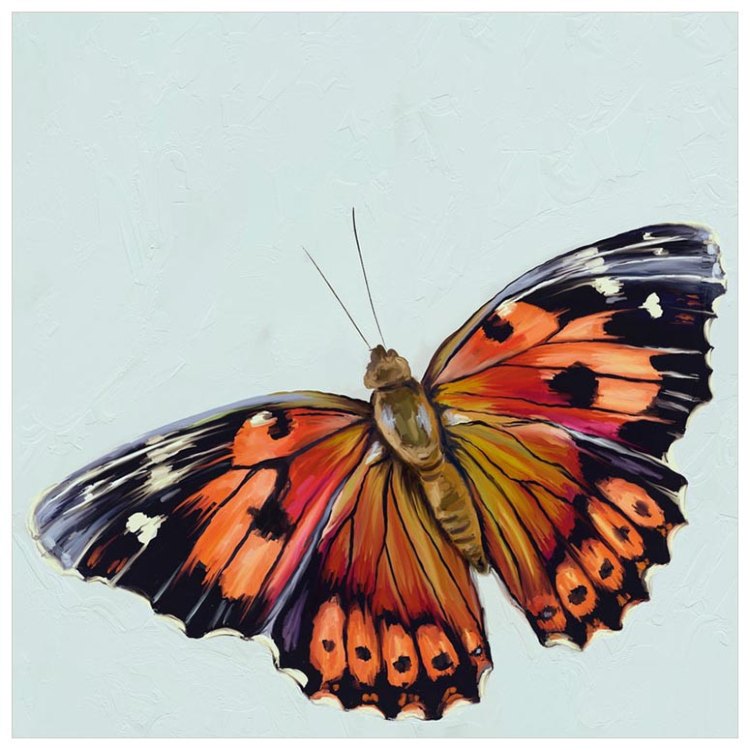
Kamehameha Butterfly
- Adult Size: Small to medium-sized butterfly
- Average Lifespan: Up to 2-3 weeks
- Reproduction: Sexual reproduction
- Reproductive Behavior: Males patrol for females, courtship involves aerial displays
- Sound or Call: None
- Migration Pattern: Local migration
- Social Groups: Solitary
- Behavior: Active during the day (diurnal), strong flyers
- Threats: Habitat loss, invasive species, climate change
- Conservation Status: Endangered
- Impact on Ecosystem: Important pollinators
- Human Use: None
- Distinctive Features: Distinct orange and white pattern on wings
- Interesting Facts: The Kamehameha Butterfly is named after King Kamehameha I, the first ruler of the Kingdom of Hawaii.
- Predator: Birds, spiders, other insects
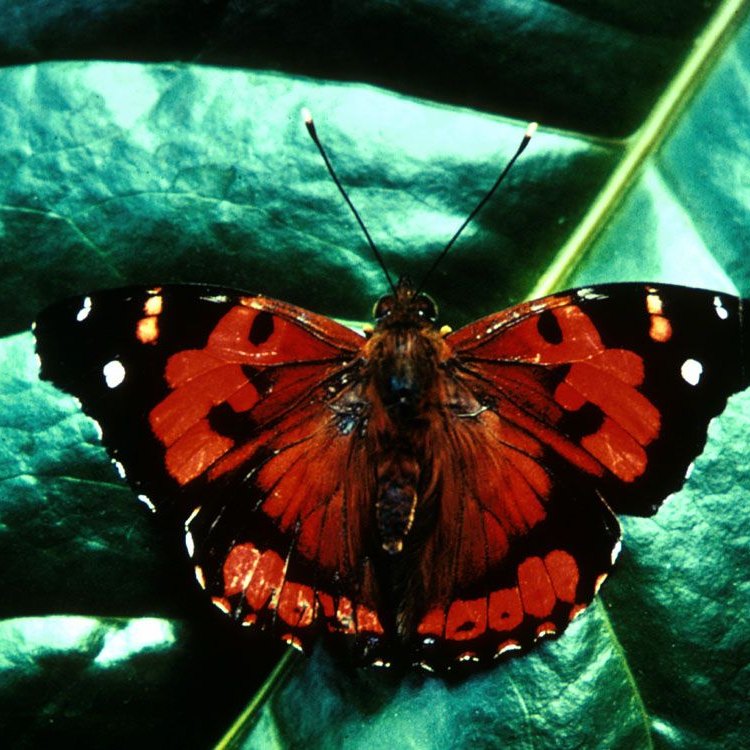
Vanessa tameamea
The Enigmatic Beauty of the Endangered Kamehameha Butterfly
The fluttering of butterfly wings is often associated with colorful gardens and tranquil forests. But in the remote islands of Hawaii, there is a butterfly that holds a deeper meaning - the Kamehameha Butterfly.Named after King Kamehameha I, the first ruler of the Kingdom of Hawaii, the Kamehameha Butterfly (Vanessa tameamea) is a symbol of resilience and beauty. This small to medium-sized butterfly is native to the Hawaiian Islands and holds a special place in the hearts of the locals PeaceOfAnimals.Com.
But behind its distinctive orange and white wings lies a unique story of survival and struggle. In this article, we will explore the fascinating features of the Kamehameha Butterfly, its behavior, threats, and conservation efforts to protect it.
An Eye-Catching Beauty
The Kamehameha Butterfly is a small to medium-sized butterfly, with an average wingspan of 2-3 inches. Its wings are a striking orange color with black markings, highlighted by white stripes that give it a unique and mesmerizing appearance. The larvae of this butterfly are green with black and white bands, and they resemble bird droppings, providing them with camouflage from predators.These delightful creatures are active during the day and are strong flyers, often seen fluttering around in the sunshine. They are considered a diurnal species, meaning they are most active during the day.
A Short But Meaningful Life
The average lifespan of the Kamehameha Butterfly is incredibly short, ranging between 2-3 weeks. Despite this short lifespan, they play an essential role in the ecosystem through their role as pollinators Kinder Goat. Like other butterflies, they feed on nectar from various flowers, helping in the process of pollination. Their presence is crucial in maintaining healthy plant communities and sustaining other animals that rely on plants for food and shelter.Vulnerable Reproductive Behavior
The Kamehameha Butterfly undergoes sexual reproduction, with males and females engaging in courtship behaviors. The males, with their distinctive orange and black wings, will patrol their territory, looking for potential mates. Their courtship involves aerial displays, where they fly around the females, showcasing their beauty with graceful movements.After mating, the female butterfly will lay eggs on the undersides of leaves, usually in groups, to ensure their survival. The eggs are carefully guarded by the mother butterfly until they hatch after a week or so, and the larvae emerge.
A Lonely Life
Kamehameha Butterflies are considered solitary creatures, with no significant social structure or hierarchy. They prefer to live and feed alone, only coming together during the mating season. However, some larvae may live in small groups for protection and shelter.A Soundless Existence
While some butterflies communicate through sounds or calls, the Kamehameha Butterfly does not emit any sounds. This may be due to the fact that Hawaii has no native songbirds, so there has been no evolutionary pressure for the butterfly to develop sound-producing organs.A Vulnerable Species
The Kamehameha Butterfly may be beautiful, but it is also vulnerable to various threats. One of the most significant threats to their survival is habitat loss. As human populations continue to grow, their natural habitat is being destroyed to make way for development.Additionally, the introduction of invasive species such as rats, cats, and ants, has greatly impacted the populations of the Kamehameha Butterfly. These invasive species prey on the larvae and eggs of the butterfly, decreasing their chances of survival.
Climate change is also a considerable threat to the Kamehameha Butterfly. As temperatures rise and weather patterns change, it disrupts the delicate balance of their ecosystem, affecting their food sources and breeding cycles.
A Local Migrator
The Kamehameha Butterfly is known to exhibit local migration patterns, meaning they move short distances to find suitable habitats and food sources. This behavior allows them to find new areas to thrive while also helping to maintain genetic diversity within their population.The Race Against Extinction
Due to these various threats, the Kamehameha Butterfly is currently listed as an endangered species. It is estimated that there are only a few hundred individuals left in the wild, making it crucial to protect and preserve their dwindling population.Fortunately, there are ongoing conservation efforts to protect this beautiful butterfly. The Department of Land and Natural Resources in Hawaii has designated certain areas as protected sanctuaries to provide a safe space for the Kamehameha Butterfly to thrive. These sanctuaries are strictly regulated to prevent habitat destruction and invasive species from entering the area.
A dedicated team of researchers and volunteers also work towards studying and monitoring the butterfly's population, behavior, and threats. This valuable information helps in the development of effective conservation strategies to ensure the survival of the Kamehameha Butterfly.
A Symbol of Resilience
The Kamehameha Butterfly may be small, but it holds a powerful message of resilience. It has survived through centuries of colonization, habitat destruction, and invasive species. Despite facing numerous threats, this beautiful butterfly continues to thrive, showing its ability to adapt and persevere.But it also serves as a reminder of our responsibility to protect and preserve our natural world. The survival of the Kamehameha Butterfly depends on our actions and choices. By taking steps to mitigate climate change, preserving natural habitats, and preventing the spread of invasive species, we can help ensure the survival of this unique and valuable species.
Conclusion
The Kamehameha Butterfly is a symbol of beauty, uniqueness, and resilience. Its striking appearance and brief but meaningful life serve as a reminder of the fragility of our planet and the importance of conservation efforts. As we strive to protect this endangered species, let us also be reminded of our duty to preserve and protect all the wondrous creatures that share this planet with us. The Kamehameha Butterfly may be small, but its impact on the ecosystem is immeasurable and worth fighting for.
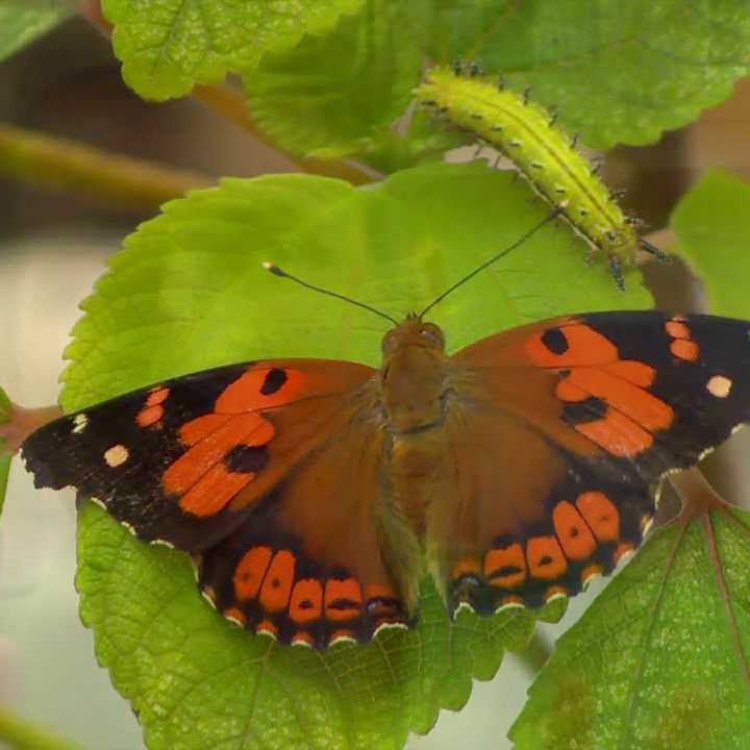
The Majestic Kamehameha Butterfly: A Rare and Beautiful Native of Hawaii
Disclaimer: The content provided is for informational purposes only. We cannot guarantee the accuracy of the information on this page 100%. All information provided here may change without prior notice.


